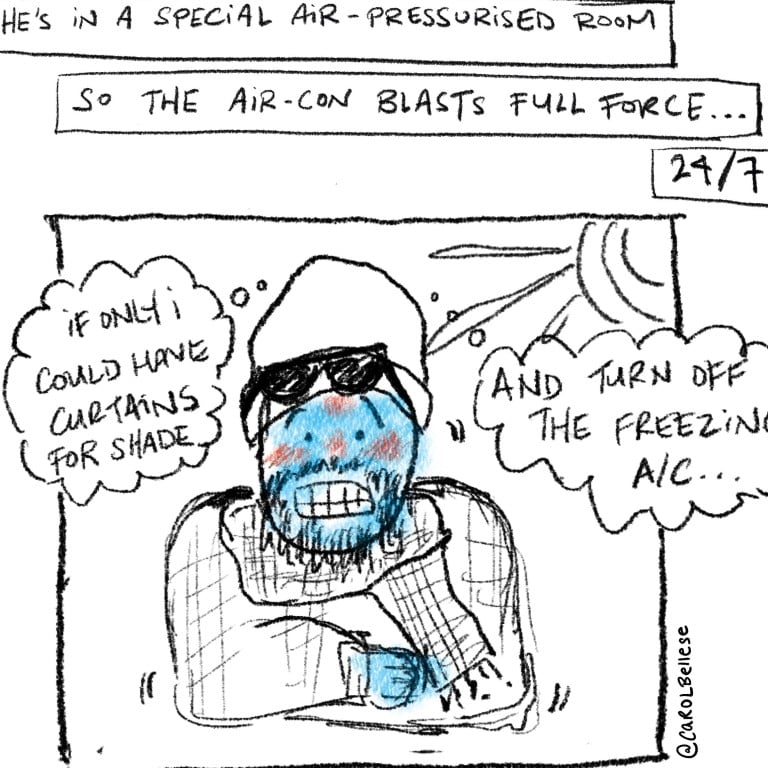
How drawing a comic strip in coronavirus quarantine helped artist see the funny side of 14 days alone in Room 1419
- Sketching comic- strip frames kept Carol Bellese Choi sane during her time in quarantine in Hong Kong after her boyfriend fell ill with Covid-19
- Finding humour in the situation ‘really was the best medicine’, says Choi – and health care professionals who use laughter as a therapeutic tool agree
Just as prisoners rarely forget their inmate identification number, Hong Kong artist Carol Bellese Choi is unlikely to forget 1419 – her room number at a government quarantine facility in Fo Tan where she was isolated for two weeks.
“The whole experience was very surreal,” says Choi, settling into a chair at a coffee shop in Wong Chuk Hang, the industrial district on the south side of Hong Kong Island where she works as a painter at the Elsa Jeandedieu Studio.

But it was her Corona Chronicles – daily sketches that captured the funny side of life “inside” – that kept her sanity intact.
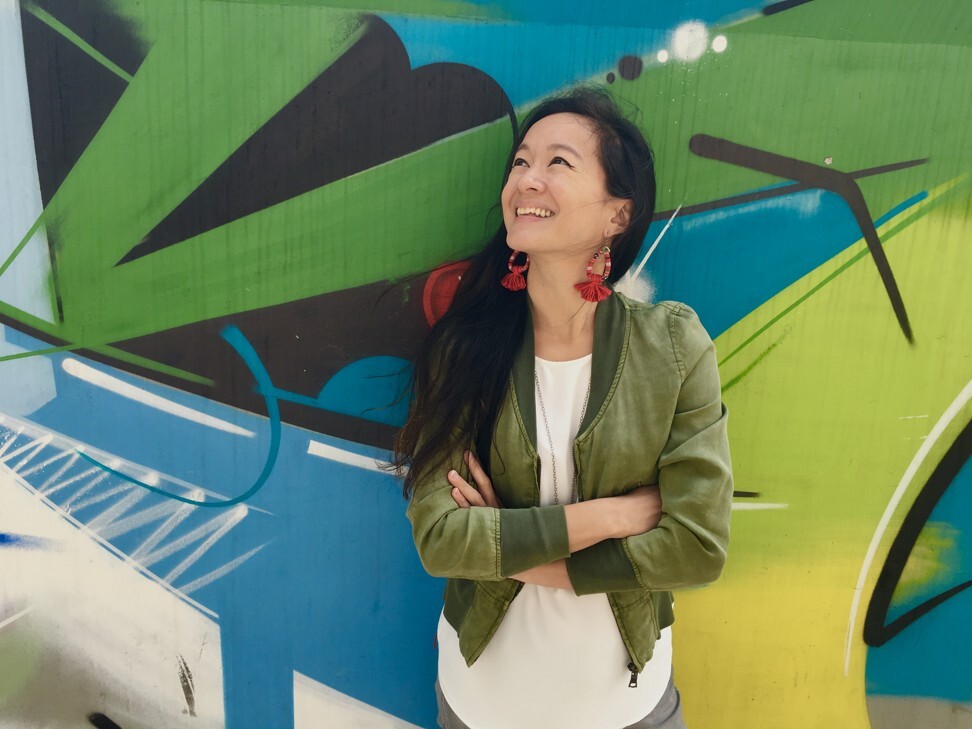
“Every day felt so long. I had zero physical contact with people and I couldn’t leave my room. The health care workers were doing an amazing job – for me and my boyfriend – but I was stressed about whether I had contracted the virus and was worried about the health of my boyfriend,” says Choi who, after 12 days in isolation, was tested for coronavirus. It came back negative.
“I didn’t pack my paints, so I tried out a new medium of comics – initially for myself, then I shared them with my boyfriend and then with other quarantined friends. Laughing at the funny side of this bad situation really helped us all.”
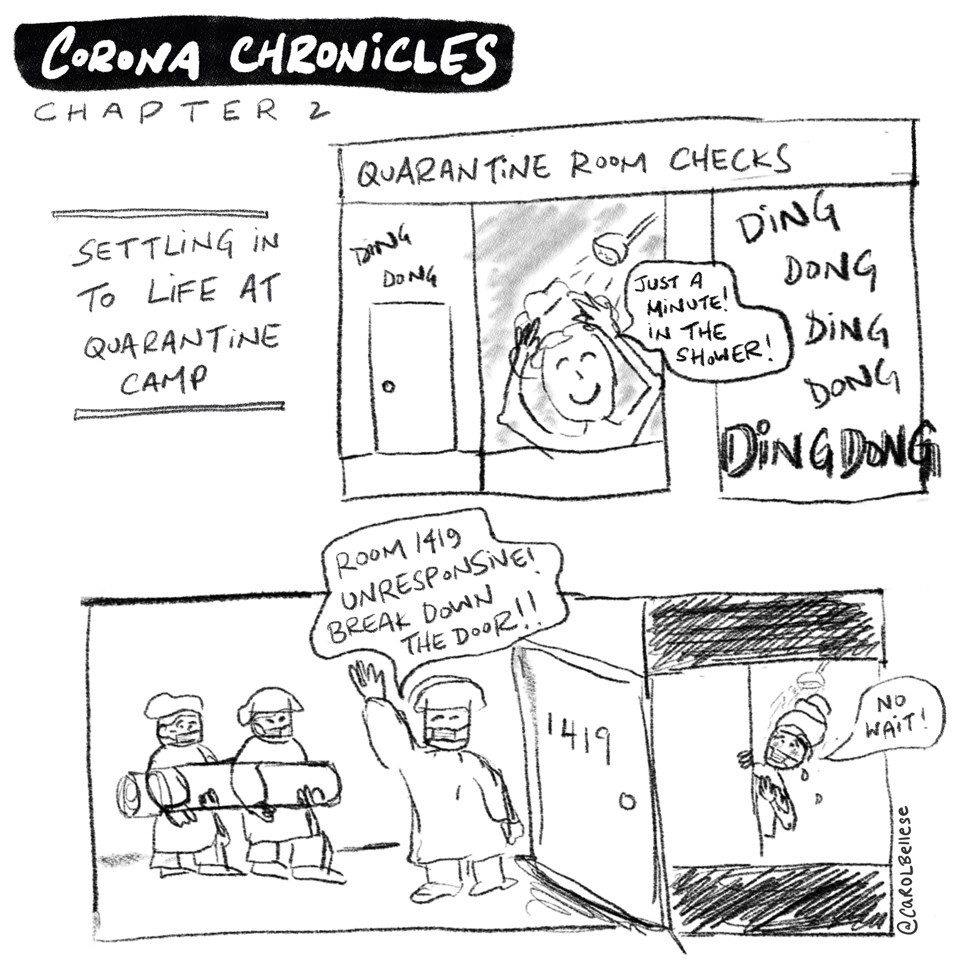
One sketch shows her blue-faced boyfriend in a beanie hat and sunglasses. “His hospital room didn’t have curtains, so the sun was blazing in on his, let’s say, delicate skin. And the room was freezing because the air-con was on full blast,” she laughs. “The cold temperature was necessary, as it was a special air-pressurised room, but he did look as if he was at a ski resort.” The pair celebrated their fourth anniversary as a couple while in quarantine.
Small victories were sketched – such as day five, when Choi received fresh fruit for the first time. “I was so excited about those two bananas,” she recalls, adding she would often daydream about avocados and cinnamon coffee.
While in isolation, Choi’s boyfriend (who has since fully recovered from the virus) volunteered to try out an experimental treatment made up of a cocktail of three antiviral drugs, which resulted in some harsh side effects. That did not escape Choi’s comic treatment.
“It was about finding humour in the mundane,” Choi says of her sketches. “Some things were just too funny – I mean, you couldn’t make it up! Laughing while sketching the comics really boosted my mental health. It really was the best medicine.”
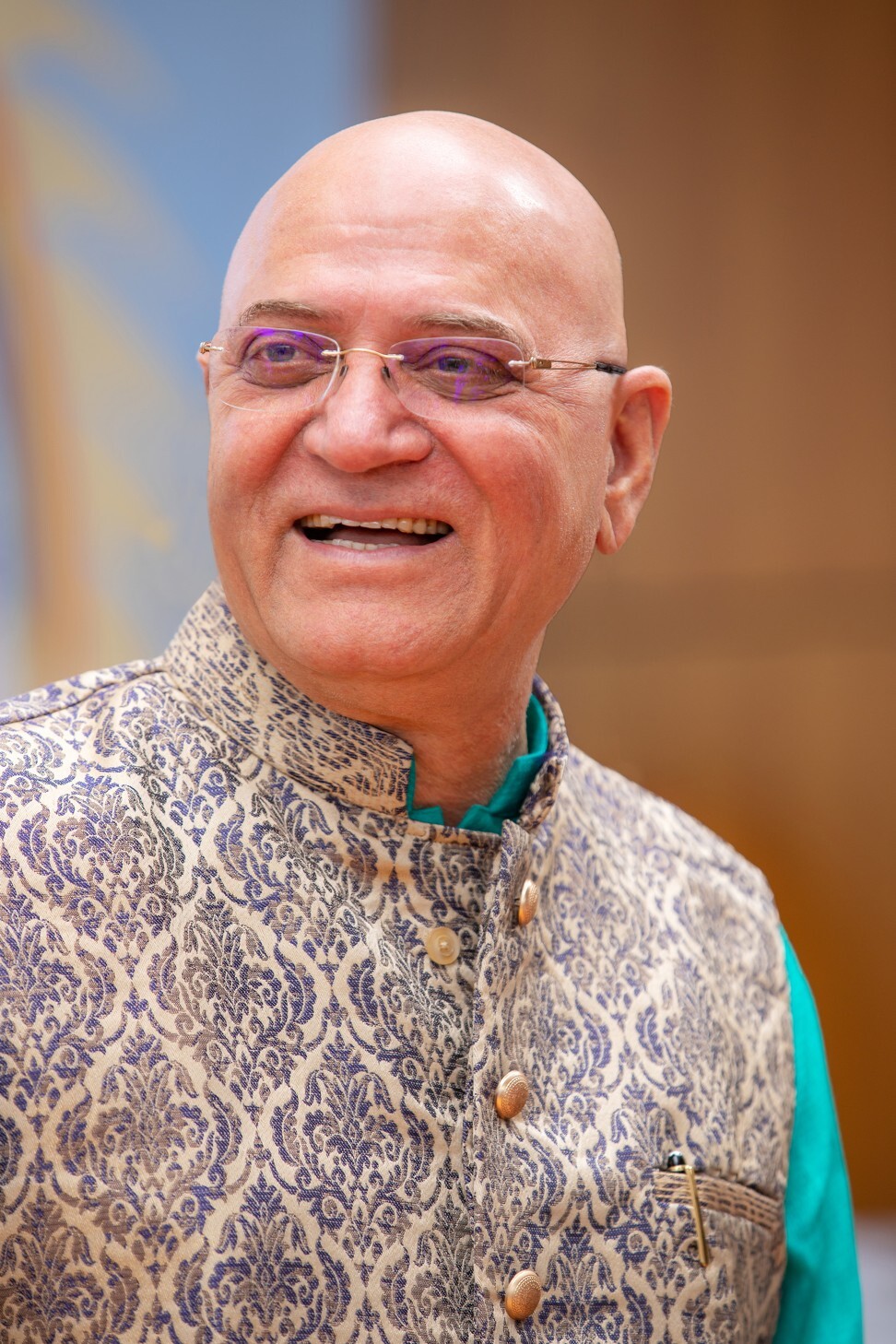

There’s a huge body of research showing the role of humour in medicine, with laughter therapy having numerous health benefits, from improving anxiety in patients with Parkinson’s disease to serving as an effective intervention for elderly patients suffering from depression.
A fake laugh is just as effective as a real one, Kataria says; moving the face muscles needed to smile, and using breath and vocal cords to create laughter, are recognised by the brain and body, generating feelings associated with laughter.
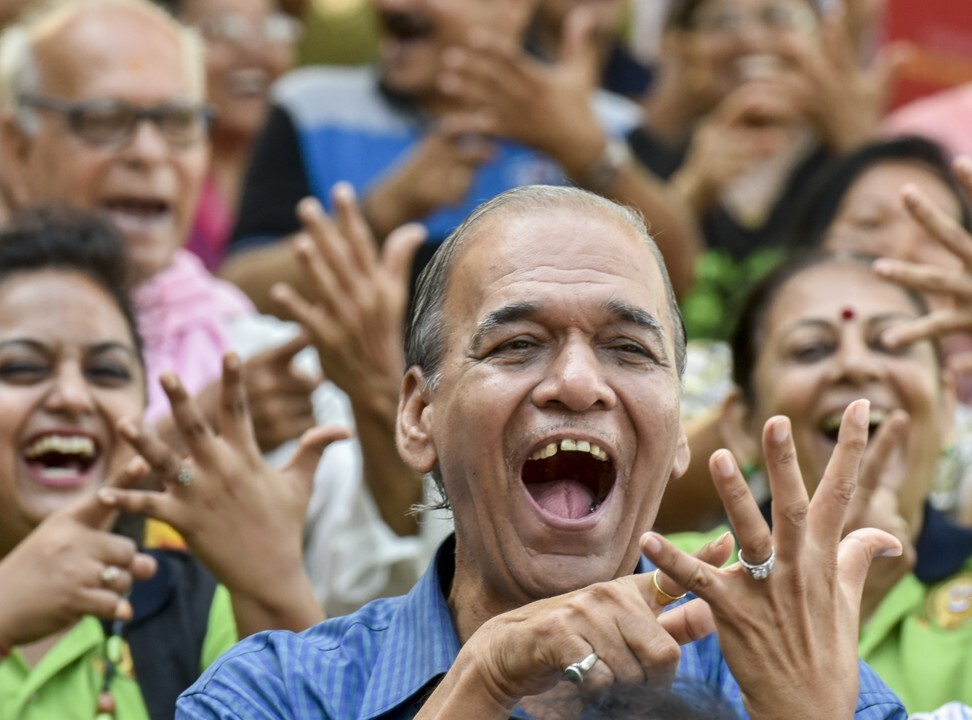
Neelam Hiranandani, a psychologist at MindWorX, a private mental wellness clinic at OT&P in Central, Hong Kong, says health care professionals often use humour and laughter as therapeutic tools.
“Laughter therapy is non-invasive, cost-effective and an easily accessible intervention. There are many social, psychological and physiological benefits such as reducing perceived stress and anxiety, improved sleep quality, alleviating depression as well as helping people cope with loneliness and poor self-esteem,” she says.
“As an intervention, laughter therapy positively influences those who experience various forms of strain in life, whether in the home, school or work.”

